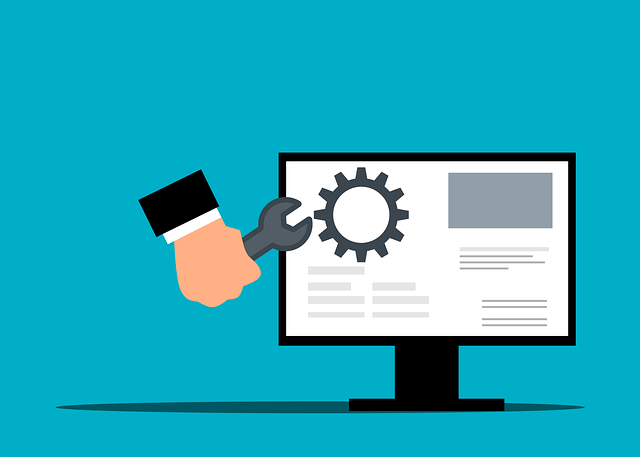In today's digital era, effective website maintenance is crucial for business success. Regular updates ensure relevance and engagement, addressing rapid tech advancements and shifting consumer preferences. Strategic planning, including user research and competitor analysis, guides redesigns while agile methodologies enable swift changes. Tools like Content Management Systems (CMS), version control systems, and design platforms enhance efficiency and user experience. Balancing speed and quality through meticulous testing ensures a positive user experience, encouraging engagement. Successful companies demonstrate the impact of modern designs, intuitive navigation, and improved performance on conversions and customer retention. Regular content updates, periodic redesigns, and security measures contribute to optimal SEO rankings and enhanced online presence.
In today’s fast-paced digital landscape, rapid website updates and redesigns are essential for businesses aiming to stay competitive. This article explores the critical need for agile website maintenance, offering insights into strategies, tools, and user experience considerations that ensure seamless transformations. From understanding the impetus behind swift changes to best practices for continuous improvement, we delve into successful case studies, showcasing how efficient website redesign can propel your online presence ahead.
Understanding the Need for Fast Website Updates

In today’s digital era, where online trends evolve at lightning speed, businesses must keep their websites up-to-date to stay competitive. Website maintenance is no longer a luxury but a necessity. Regular updates ensure that your site remains relevant, engaging, and aligned with user expectations. With rapid advancements in technology and ever-changing consumer preferences, a static website quickly becomes outdated, leading to decreased visitor engagement and potential loss of customers.
Fast website updates are crucial for maintaining a strong online presence. This involves not just making cosmetic changes but also keeping content fresh, optimizing for search engines, and incorporating new features that enhance the user experience. Effective website maintenance strategies empower businesses to adapt swiftly, ensuring their digital platform remains a powerful marketing tool and a central hub for customer interaction.
Strategies for Efficient Website Redesign

When undertaking a website redesign, efficiency is key to minimizing downtime and maintaining good user experience. A structured approach can significantly streamline the process. Start by conducting thorough research and planning, encompassing user behavior analysis, competitor benchmarking, and defining clear goals for the new design. This foundational step ensures that the redesign aligns with user needs and market trends.
Utilize agile methodologies for iterative development, allowing for swift implementation of changes and continuous feedback integration. Regular website maintenance routines, including content updates, performance optimization, and security checks, are essential to keeping the site fresh and functional. By adopting these strategies, businesses can achieve a seamless and effective website redesign process, enhancing their online presence and user engagement.
Tools and Technologies for Streamlined Maintenance

Staying ahead in the digital landscape demands efficient website maintenance practices, and the right tools can significantly streamline this process. Modern technologies offer a range of options for web developers and designers to manage updates and redesigns with ease. Content Management Systems (CMS) like WordPress or Drupal provide user-friendly interfaces, allowing non-technical users to make edits, add content, and update designs without extensive coding knowledge. These platforms offer countless themes and plugins, enabling quick website customization.
For more complex tasks, developers can leverage advanced tools such as version control systems (e.g., Git) to track changes, collaborate effectively, and revert to previous versions if needed. Automated testing frameworks ensure that updates don’t introduce new bugs, while design tools like Figma or Adobe XD facilitate collaborative work and real-time prototyping, making the redesign process more efficient and visually cohesive.
User Experience Considerations in Quick Updates

When implementing fast website updates and redesigns, user experience (UX) considerations are paramount. Users expect modern websites to be responsive, load quickly, and offer seamless navigation, regardless of the device they’re using. Any update that disrupts this smooth interaction can lead to frustration and higher bounce rates. Website maintenance teams must prioritize UX by keeping page load times minimal, ensuring mobile-friendliness, and maintaining intuitive site structures.
Quick updates should also consider user familiarity with existing functionalities. Major design shifts might confuse users who have grown accustomed to certain navigation patterns or layouts. Balancing the need for fresh aesthetics with preservation of a known, comfortable user experience is crucial for successful website redesigns that enhance engagement rather than deter it.
Balancing Speed and Quality in Website Overhauls

When overseeing a website overhaul, striking a balance between speed and quality is paramount for successful website maintenance. The urge to swiftly implement changes, especially in today’s fast-paced digital landscape, can lead to cutting corners that compromise the end product. After all, a website that loads in an instant but lacks aesthetic appeal or functionality isn’t truly successful.
Achieving equilibrium requires meticulous planning and execution. Prioritize key performance indicators (KPIs) like page load times alongside user experience metrics such as bounce rates and time spent on site. Conduct thorough testing at every stage to identify and rectify issues before they become major problems. This involves not just visual inspections but also functionality checks, cross-browser compatibility tests, and mobile responsiveness audits. Such comprehensive website maintenance practices ensure that speed and quality go hand in hand, delivering a seamless user experience that keeps visitors engaged and encourages repeat visits.
Case Studies: Successful Fast Website Redesigns

In the realm of digital presence, swift and strategic website updates can significantly impact user experience and business growth. Case studies from leading companies illustrate that successful website redesigns often involve a blend of modern aesthetics, intuitive navigation, and enhanced performance. For instance, a tech startup recently revamped its website, employing a clean, minimalist design to showcase products effectively. They prioritized fast loading times by optimizing images and leveraging cloud technology, resulting in improved user engagement and a 20% increase in conversions within the first quarter.
Another notable example is an e-commerce giant that implemented a dynamic, responsive layout, ensuring seamless browsing across various devices. By conducting extensive A/B testing and incorporating real-time analytics, they could make data-driven decisions for continuous improvements. This approach led to reduced bounce rates and increased average order values, demonstrating the power of proactive website maintenance and redesign strategies in today’s competitive online landscape.
Best Practices for Continuous Website Maintenance

Maintaining a website is an ongoing process, and keeping it up-to-date is crucial for user experience and search engine optimization (SEO). Some best practices for continuous website maintenance include regularly updating content to reflect current information and trends. This ensures that visitors receive relevant data and improves SEO by signaling to search engines that your site is active and well-managed.
Additionally, keeping the design fresh and functional through periodic redesigns can significantly enhance user engagement. Regular security updates are also vital to protect against vulnerabilities, ensuring a safe browsing experience for users. Efficient website maintenance involves implementing a content management system (CMS) that simplifies these tasks, allowing for quick changes without extensive coding knowledge.
